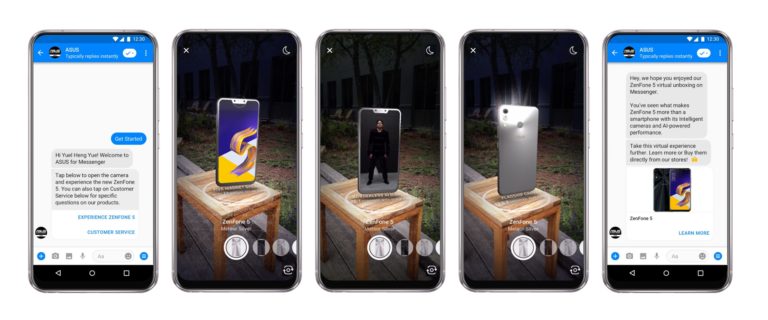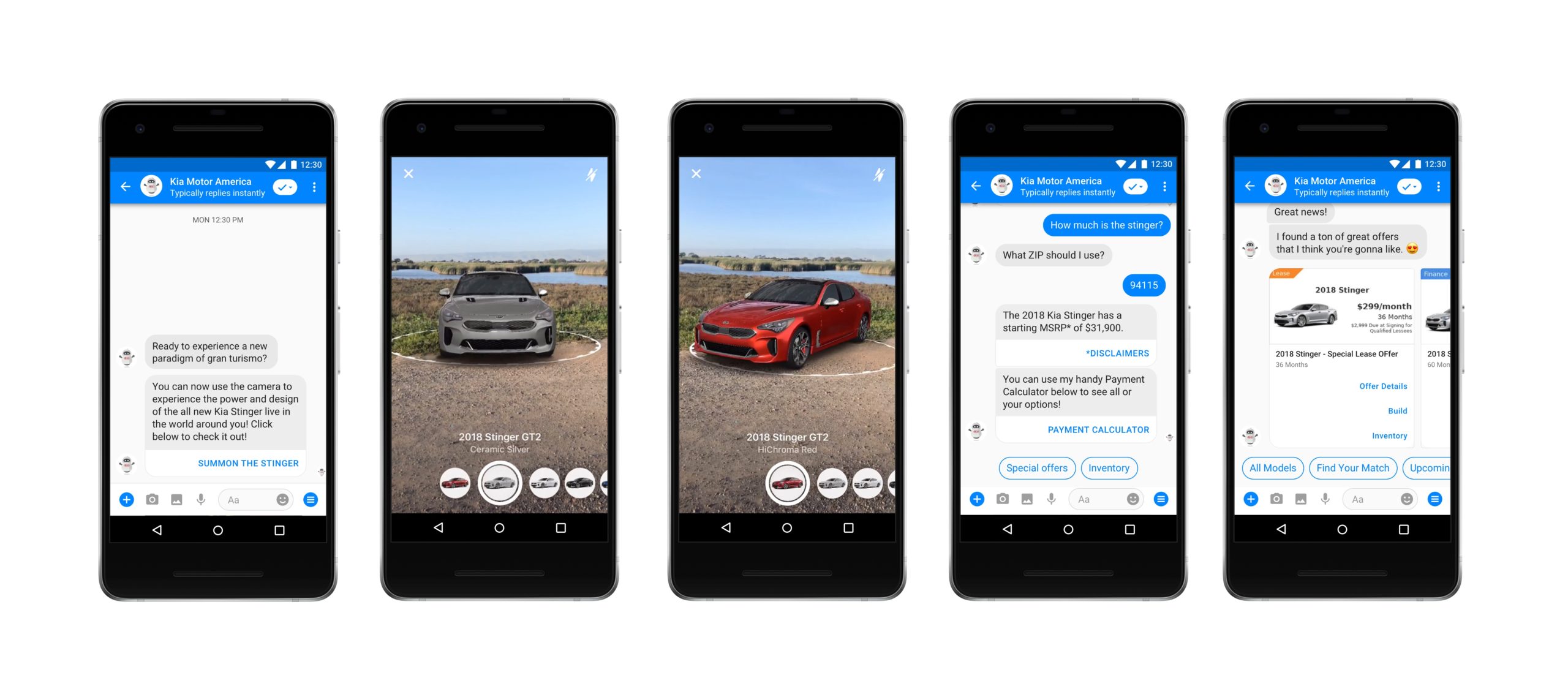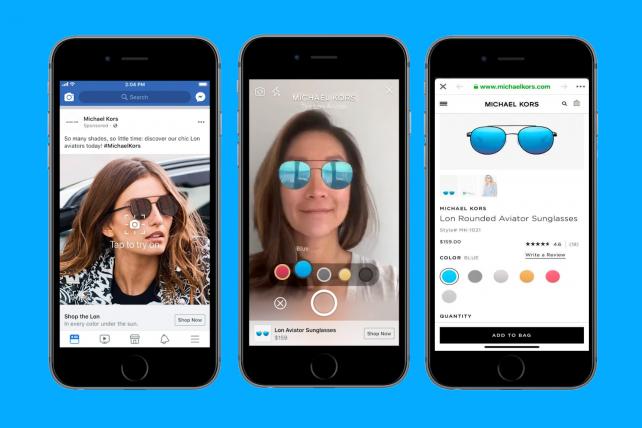
This post is adapted from ARtillry’s latest Intelligence Briefing, The Camera is the New Search Box: Ads in AR. It includes some of its data and takeaways. More can be previewed here and subscribe for the full report.
So what does AR advertising look like? It will develop in several ways as the medium evolves and as creative professionals gain their “native footing” to optimize campaigns in ways that play to AR’s strengths. Until then, we’re seeing early signs of effectiveness.
Here are three illustrative examples from prominent brands.

1. Shoe Drop
Advertiser: Foot Locker
App/Network: Snapchat
Advertising Stage: Upper funnel, awareness
Cost: Programmatic ad buy, $3-$8 CPM (estimated total campaign cost = $22,000)
Results: 45 second average play time, 4 million impressions
Foot locker, in partnership with Jordan Brand, devised an AR campaign to run on Snapchat. Using its “Ad to AR” format, users swiped up on a related story to reveal a branded lens. In this case, the lens featured AR animations for a new shoe release and Gatorade flavor.
Specifically, users could launch the AR overlay, which featured the new shoe in an animated sequence placed in their immediate surroundings. The gamified and animated appeal of the campaign drove an average play time of 45 seconds, and four million total impressions.
Though it wasn’t the case in this campaign, Snapchat’s AR lenses can be integrated with its “shoppable AR.” This lets advertisers integrate an additional layer of transactional functionality that lets users purchase goods right within Snapchat (more user-friendly).
This commerce infusion will be a key evolution, given the potential for lower-funnel, high-intent product interactions. As time goes on and advertisers gain greater levels of comfort and skill with AR ads, commerce functionality will allow them to take a “full funnel” approach.

2. The Future’s Looking Bright
Advertiser: Michael Kors
App/Network: Facebook
Advertising Stage: Full-funnel, awareness and direct response
Cost: Undisclosed
Results: Unavailable (early stage)
Speaking of full funnel, Michael Kors is a launch partner for Facebook’s newest AR ad format which places actionable AR ads in the news feed. Similar to standard news feed ads, these are placed programmatically based on social signals and targeting parameters.
Known as News Feed AR ads, they let advertisers apply AR camera effects including virtual product try-ons. The Michael Kors campaign did just that, allowing users to quickly go from the ad unit to a front-facing camera activation that virtually tries on sunglasses.
Beyond the novelty and utility of trying on sunglasses, the ads can capture high user intent by flowing into a transaction thread. Advertisers can integrate calls to action that lead users to an online store. Video of product try-ons can also be shared for an additional viral kick.
Though it’s too early to tell the results from this campaign, other KPIs are available for AR ads on Facebook. ASUS saw 10x greater engagement with AR ads in Facebook Messenger, and Kia saw a 46 percent boost in dealer inventory searches, and phone calls (see chart below)

3. ‘Tis The Season
Advertiser: Home Depot
App/Network: Oath/Yahoo Mail
Advertising Stage: Lower-funnel, direct response
Cost: Undisclosed
Results: 2+ minute average engagement time. 12.5 percent CTR to shopping page.
To drive interest around its holiday décor products, including Christmas Tree decorations, Home Depot built an AR campaign that let users virtually decorate a tree. This was done with digital agency RYOT using Unity, through publishing giant Oath, with Yahoo Mail.
Much like the above examples, an AR activation could be launched from a typical banner ad. Once clicked, users could place a virtual tree in their surroundings, then decorate it with lights and ornaments. Users could then click to a transaction page to buy said items.
The results included 2+ minutes of average engagement time and a 12.5 percent click through rate to transaction pages — strong metrics in ad terms. Also notable: the campaign achieved greater scale through email distribution, and by not requiring app downloads.
“You click on a link and it launches an AR shopping experience right there,” Unity’s Tony Parisi said at AWE. “Decorate your Christmas tree and it closes the loop to the shopping page. They got double the lift in terms of click-through, which demonstrates engagement to the shopping page.”

Honorable Mention: Does it Fit?
Advertiser: N/A
App/Network: Houzz
Advertising Stage: Lower-funnel, direct response
Results: 11x increase in purchase intent. 2.7x increase in time-in-app
When discussing AR engagement that drives measurable commerce, it’s only fair to cite Houzz. It achieved an 11x boost in purchase intent and 2.7x boost in time spent. We list this as “honorable mention” because it’s not technically an ad campaign (paid “ad buy”).
It is rather the standard engagement within its organic app, using its AR furniture visualization feature. This should be delineated from paid ad campaigns, but is nonetheless an indicator of commerce-oriented engagement levels that can be achieved with AR.
Several more examples can be seen in the chart below and stay tuned for more excerpts and insights from our AR in advertising analysis.


For a deeper dive on AR & VR insights, see ARtillry’s new intelligence subscription, and sign up for the free ARtillry Weekly newsletter.
Disclosure: ARtillry has no financial stake in the companies mentioned in this post, nor received payment for its production. Disclosure and ethics policy can be seen here.
